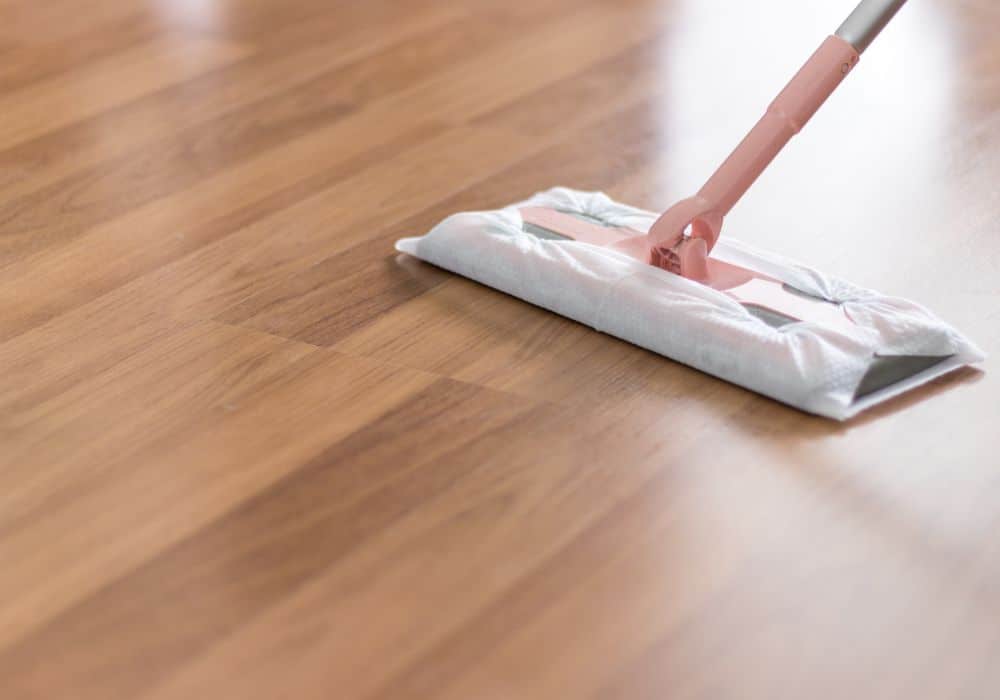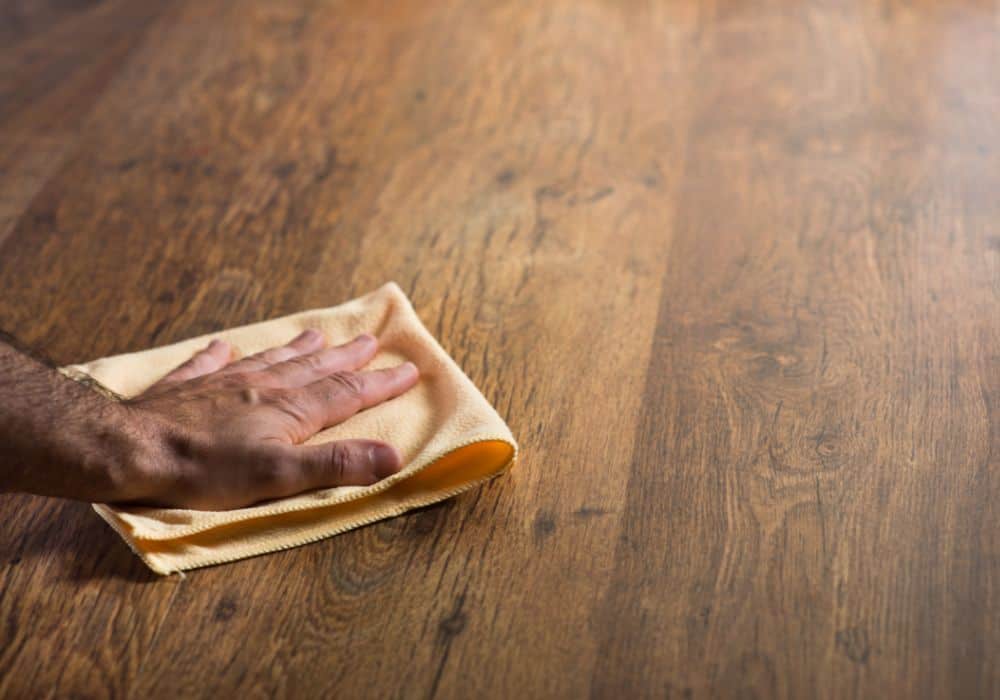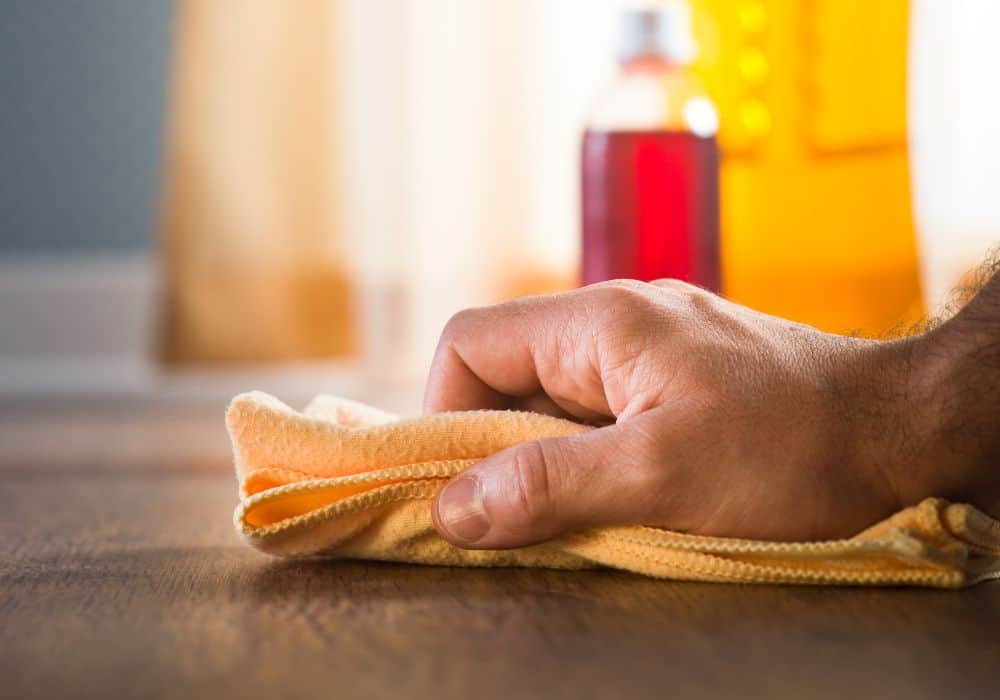Wiping up fresh cat urine with a paper towel from a hardwood floor is easy, but what about when the puddle of urine has gone unnoticed in a corner or behind a piece of furniture? When left, the urine will sink into the floorboards and you are likely to notice a repugnant smell in your home. You need to locate the old urine spot and clean the floor. But how do you do this?
There are a few different methods you can use to remove old cat urine from wood floors. In this article, we share those methods with you together with tips on how to prevent your cat from urinating on your floors.
Read on to find out how to clean the spot of old cat urine and free your home from lingering smells.
How To Remove Old Cat Urine From Hardwood Floors?
Method One: Using a Homemade Cleaning Agent
This is a low-cost cleaning method using ingredients that most people will find in their cupboards. It is an easy method and while it may not always be the most effective on very old stains, it is definitely worth giving a try.
You Will Need:
- Dish soap
- White vinegar
- Warm water
- Baking soda
- Hydrogen peroxide
- A sponge
- A rag
Step One
Start by cleaning the area with warm water, dish soap, and a rag. When you have given the area an initial clean, empty your water bucket and fill it up with fresh warm water and discard the rag. If you continue using the same water and rag, you could spread the smell back into the floor.
Note that if the stain is not very old, the dish soap alone can be enough to clean the stain and get rid of the smell.
Step Two
Add one cup of white vinegar into your bucket of warm water and give it a thorough mix. Use the vinegar and water mixture to scrub the affected section of the floor with a sponge. The vinegar should remove any stains that the urine has left on the floor.
Step Three
Let the area dry and then inspect it. If any stains or odors remain, add hydrogen peroxide to the affected area. Let it dry before adding baking soda to the urine stain. Leave it for about an hour and then vacuum the area clean.
Method Two: Enzyme Cleaners
If you still notice the stain or smell the urine after you have used method one, you can try enzymatic cleaners. These are cleaning agents formulated to remove urine stains and pet odors.
You Will Need:
- Enzyme cleaner
- Warm water
- A sponge
- A rag
Step One
If you haven’t dried method one on the stain or some time has elapsed since you did it, you will need to start by cleaning the area with a rag and warm water. Remember not to use the same rag again and to change your water afterward.
Step Two
When the floor is clean and dried, add the enzyme cleaner to the stain. Rub it in lightly with the sponge and leave it to soak into the floor thoroughly before you clean it off. This will give the enzymes enough time to eliminate the urine smell.
Step Three
When the enzyme cleaner has soaked into the floor, get a fresh bucket of water and a clean rag or a sponge and clean the area. Leave it to dry fully before inspecting the results.
Method Three: Sanding The Floor
Sometimes you will find that no amount of cleaning and scrubbing will remove the stain or the cat urine smell. When that happens, your next step is to sand and reseal the floor.
You Will Need:
- Tape
- Plastic Sheets
- A sander
- Hard-grit and fine-grit sandpaper
- A Prybar
- A broom or vacuum cleaner
- A paintbrush
- Floor sealant
Step One
Begin by checking the thickness of your wood flooring. If the stain is very old and has sunk deep into the floorboard, it may be better to replace the board than sand it. We will cover this in method four. You also will need to replace the board if the stain is close to the tongue-and-groove which cannot be sanded.
Step Two
Prepare the area next. Tape plastic sheets on the doorways of the room to stop the dust from spreading into the rest of your house. You may also like to use the prybar to remove the baseboards and quarter-round as this can make the sanding easier. However, this is optional, just be mindful of them when sanding if you leave them in place.
Step Three
With the preparation done, start standing the area using high-grit sandpaper and finish with fine-grit paper. Do not apply pressure but move the sander around the spot. The weight of the sander is enough to do the work. When finished, use the broom or a vacuum cleaner to clean away the sawdust.
Step Four
Next, wipe the sanded area with a damp cloth to ensure no sawdust remains. Leave to dry before applying the floor sealant with a clean paintbrush. Ensure that no one can walk in the area until the sealant has completely dried.
Method Four: Replace The Floorboard
If nothing else has worked, the final solution is to replace the floorboard. Luckily, it is not that difficult to do as long as you can find a replacement floorboard that matches your floor.
You Will Need:
- A drill with a one-inch spade drill bit or smaller
- A circular saw
- A hammer
- A chisel
- A prybar
- A utility knife
- A rubber mallet
- Nails
- Wood putty
- Sandpaper
Step One
Begin by drilling holes in the floorboard with the one-inch spade drill bit. Do this on both ends of the floorboard. Note that you will need a smaller drill bit if your floorboards are less than one inch thick.
Step Two
Next, saw through the center of the board with a circular saw. Your blade should be 1/16 inch deeper than your floorboards. Start from one of the holes you drilled and cut through the board until you reach the other hole. Next, make a second cut parallel to the first about half an inch apart.
Step Three
Using your hammer and chisel, work the center cut loose to remove it. Then you can remove the rest of the floorboard. If any nails are holding the board down, remove them with a prybar. Chisel off the tongue of the floorboard your replacement board will connect with.
Step Four
Measure the size of the replacement board and cut it to size. Use a utility knife to remove the groove of the replacement piece. This will allow it to sit flush in the space you cut on the floor.
Step Five
Fit the replacement board into the gap. You may need to use a rubber mallet to tap it into place. Fix the board in place with flooring nails or with glue. If you used nails, finish off by applying wood putty on the head of the nail, leave to dry, and then sand until flush with the floorboard.
How to Prevent Your Cat From Urinating on Your Floors
While accidents can happen especially with very young or old cats, the best way to protect your floors is to stop your cat from urinating on them. Here are some methods you can apply to prevent urine stains on your floors.
1. Get The Right Litter Box
Cats come in different sizes and this should be taken into account when choosing a litter box. It should be about 1.5 times the length of your cat so your cat will have space to turn around. You should not get a covered litter box as the odors will stay in the box and may stop your cat from using it.
2. Get The Right Number of Litter Boxes
If you have more than one cat, each of your cats should have a dedicated litter box. You should also have more than one litter box if you live in a house with multiple floors. Ideally, there should be one litter box on each floor.
3. Pick The Right Location For The Litter Box
Choose a convenient location for your cat. Litter boxes should not be placed in damp basements, in closets, close to appliances such as washing machines, or near food. If you have multiple cats, spread them around rather than group them in the same area.
4. Keep The Litter Box Clean
Cats are clean animals and they will not like to use a litter box with old waste or a strong smell of cat urine. You should scoop out waste as soon as possible and wash the box out at least once every month. Avoid cleaning agents with strong scents as this can prevent the cat from using the box.
5. Consult a Vet
If your cat keeps urinating or suddenly starts urinating on floors, take your cat to the vet who can check your cat’s health. Problems with kidneys or a urinary tract infection can cause cats to change their habits. To learn more about why your cat might pee on the floor, you can watch this video.
Conclusion
While cleaning up cat urine as quickly as possible will prevent urine odor and stains, it is not always possible. If you have an old urine stain on your hardwood floors, work through the methods in this article. They can be applied to old dog urine stains, too.
If you have any questions about removing old cat urine from hardwood floors, you can write them in the comments section.


